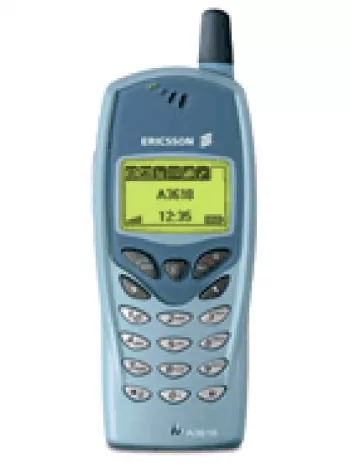
Overview
The Ericsson GS 18 is a vintage mobile device that represents the early stages of mobile technology. First announced in 1996, this device marked a significant moment in the evolution of mobile phones, being part of the suite of devices that began to make mobile communication more accessible to the general public.
Design and Build
The device is notable for its bulky design by today’s standards. It measures 147 x 60 x 24 mm and weighs approximately 215 grams. The body is constructed with durability in mind, capable of withstanding the common physical wear and tear of daily use. The Ericsson GS 18 incorporates the Mini-SIM technology, which was the standard at the time, allowing for a more compact and convenient design than its predecessors.
Display Features
The display of the Ericsson GS 18 is simplistic, featuring an alphanumeric screen with a resolution capable of showing 4 x 12 characters. This kind of display was typical for mobile phones in the '90s, focusing primarily on functionality and ease of reading rather than color depth and pixel density, which modern users might expect.
Network Capabilities
The Ericsson GS 18 operates on GSM 900 technology, limiting its functionality to 2G networks, which were predominant during its release. It lacks both GPRS and EDGE capabilities, which means it does not support data services, a common limitation for devices at the time.
Memory and Storage
When it comes to memory, the GS 18 could store up to 100 contacts in its phonebook. However, it does not have a card slot for memory expansion. Unlike modern technologies, which focus significantly on increasing storage capabilities, devices like the GS 18 were designed for mainly communication purposes without additional storage.
Sound and Alert Options
The sound options on the Ericsson GS 18 are rather limited. It provides monophonic ringtones and does not support a 3.5mm audio jack or a loudspeaker. This reveals the emphasis on communication functionality over multimedia capabilities during its time.
Battery Life
The device is equipped with a removable NiMH 1200 mAh battery. This battery type was common before the adoption of lithium-ion batteries. The GS 18’s battery offers up to 36 hours of standby time and about 180 minutes of talk time, which was generally sufficient for mobile phones in that era.
Communication Technologies
In terms of communication, the Ericsson GS 18 lacks many of the modern connectivity features. There is no WLAN, Bluetooth, or even a USB port. The device was designed as a feature phone, equipped solely for basic SMS messaging, which was innovative at the time.
Miscellaneous Features
Other features of the GS 18 include the fact that it does not have a clock, alarm, or games, elements that are considered standard in even the most basic modern phones. It supports up to 12 languages, which demonstrates its attempt to reach a broader audience across different regions.
The strength of devices like the Ericsson GS 18 lies not in competing with modern smartphones on advanced features or applications but in representing a key developmental stage in the history of mobile communication. Observing these devices gives insight into the journey mobile phones have taken from simple communicators to the multifaceted devices they are today.
Main Features of Ericsson GS 18
- GSM Technology
- Compact Dimensions: 147 x 60 x 24 mm
- Alphanumeric Display
- Memory supports up to 100 phonebook entries
- SMS Messaging Capability
- Support for 12 Languages
- Removable NiMH 1200 mAh Battery
- Stand-by time up to 36 hours
- Talk time up to 180 minutes
Ericsson GS 18 Drawbacks
- No GPRS or EDGE support, limiting internet connectivity.
- Bulky design with a weight of 215 g, making it less portable.
- Limited display capabilities with only alphanumeric type and 4 x 12 characters resolution.
- No camera functionality, reducing multimedia options.
- Lack of loudspeaker and 3.5mm jack, limiting audio capabilities.
- Absence of modern communication features like WLAN, Bluetooth, and USB.
- No built-in positioning or radio capabilities.
- Limited messaging options with only SMS support.
- No built-in clock, alarm, or games features.
- Small phonebook capacity of only 100 contacts.
- Short battery life with only 36 hours standby and 180 minutes talk time.
View Also
More Phones
All Rights Reserved +14266 Phones © Mobilawy 2025
























